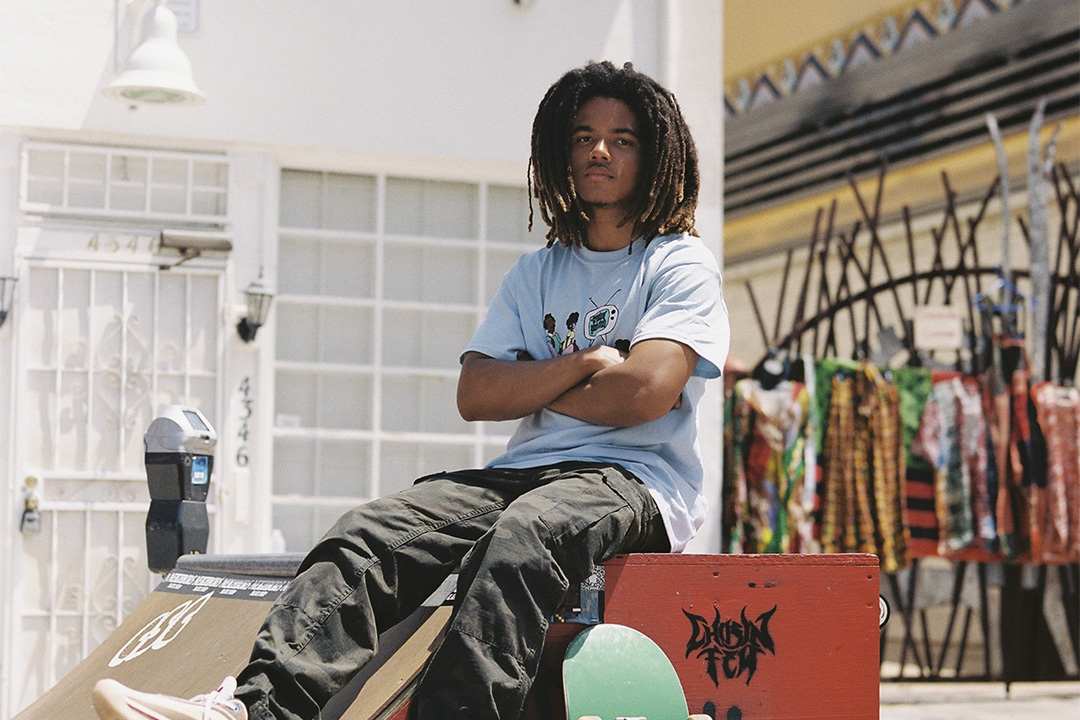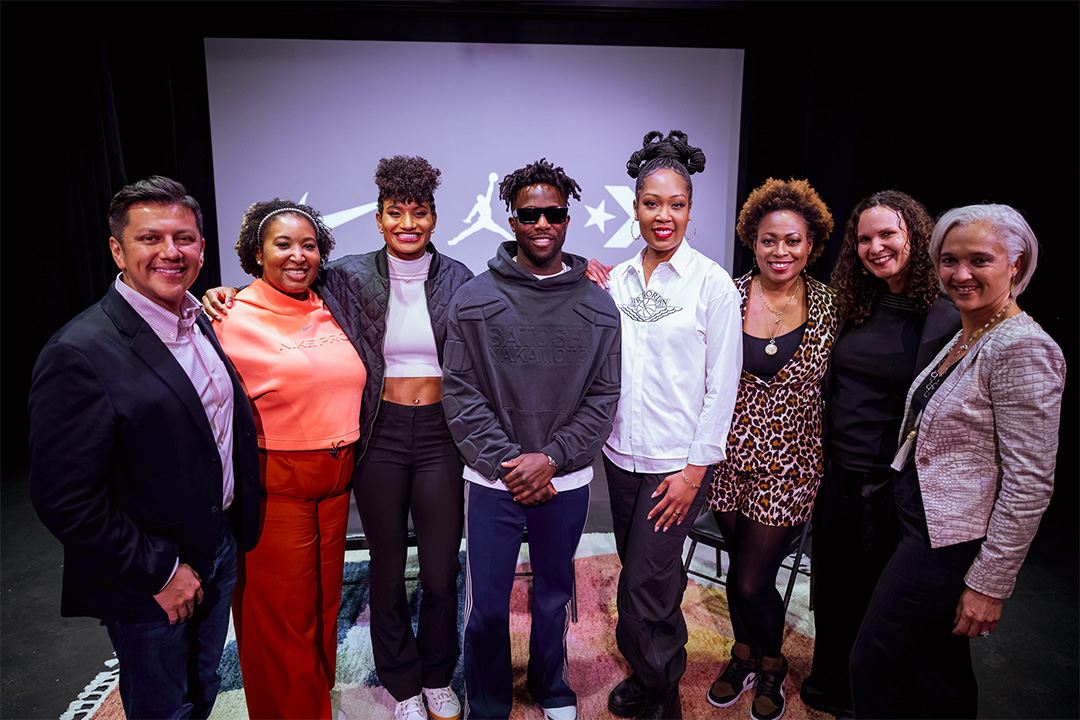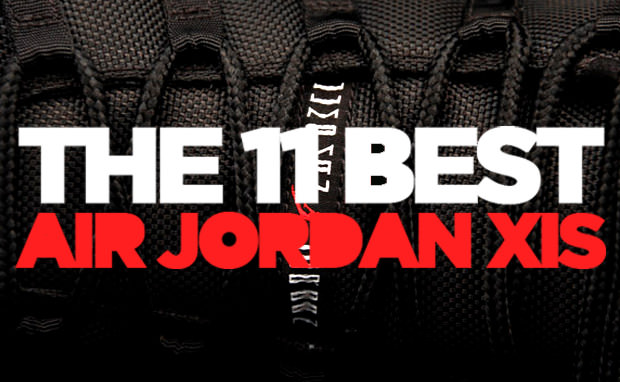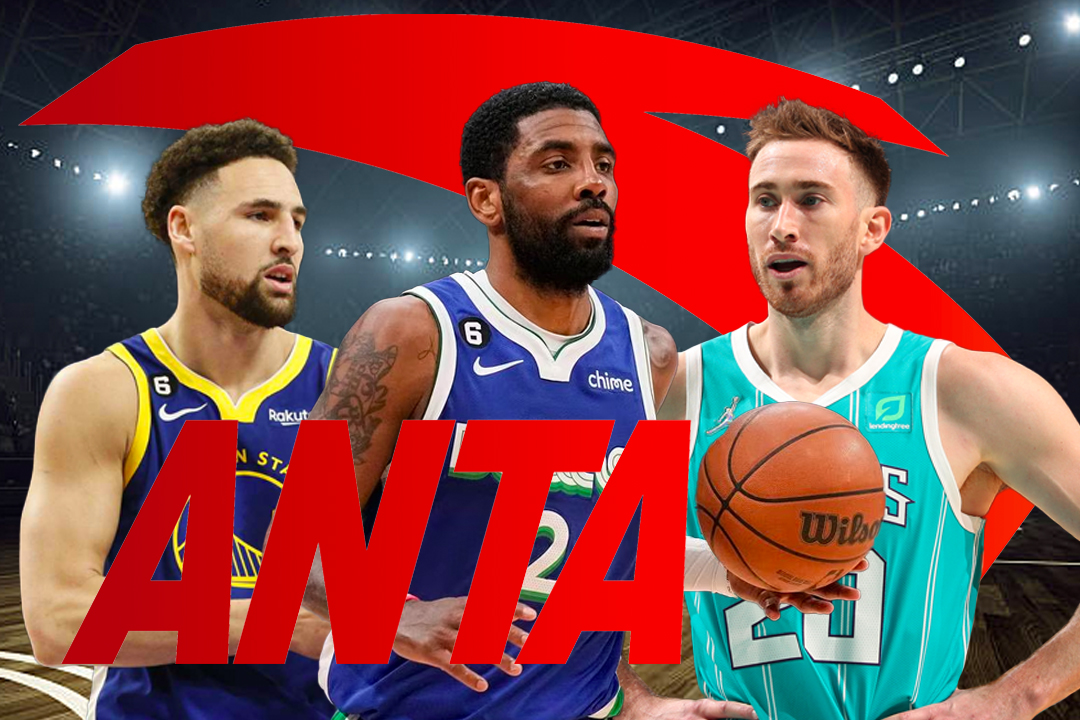This post may contain affiliate links. Please read our disclosure policy.
Talking to Tobey McIntosh is like speaking to an ancient, all-knowing oracle. The only difference is that Tobey is just barely 19-years-old. With a pure heart and calm demeanor, Tobey has a ruminative composure that is wise beyond his years.
Growing up around the skate scene of South Central, Los Angeles, one could assume that Tobey would be a brash kid with a rebel edge, but he’s managed to flip the skater stereotype instead by creating Crenshaw Skate Club – his own self-made skate brand that he started at 14-years-old.
More than just a clothing brand, Crenshaw Skate Club serves a much greater purpose as it represents the skaters of a historically Black neighborhood in Los Angeles. Tobey would look around his community and noticed all the talent that he felt wasn’t being recognized in the mainstream. This inspired Tobey to make shirts for his friends, something that they would be proud to wear and felt representative of where they came from.
Since the beginning, Tobey has kept his process with Crenshaw Skate Club as simple as possible. Rather than starting online, he hit the streets to get the word out about the brand. He put himself out there by telling his story to anyone that would listen and advocated for his community along the way. This led Tobey to strike a deal with Supreme, which became Crenshaw Skate Club’s first official retailer. Outside looking in, it seemed that Tobey had instant overnight success because his shirts were flying off the shelves at Supreme, but when Tobey finally launched the Crenshaw Skate Club website months later, he wasn’t able to sell a single shirt. It became clear to Tobey that Crenshaw Skate Club didn’t have much of a presence outside of Supreme, but rather than giving up, he just challenged himself to get better.
One move after another, Tobey continued to connect with people around LA and landed major collabs with brands like Lacoste, Round Two, Born x Raised, The Hundreds, and even the Los Angeles Clippers. Now, as Crenshaw Skate Club gets ready to celebrate its 5th Anniversary, Jordan Brand honors Tobey with his very own Crenshaw Skate Club x Air Jordan 36 Low “Tobey” PE.
Tobey McIntosh took a break from his midterms at Stanford to talk with Nice Kicks about his Jordan PE, how he started Crenshaw Skate Club with only $100, watching Nice Kicks on Youtube, and all of his community outreach initiatives that he’s done thus far. Check out the full interview below.
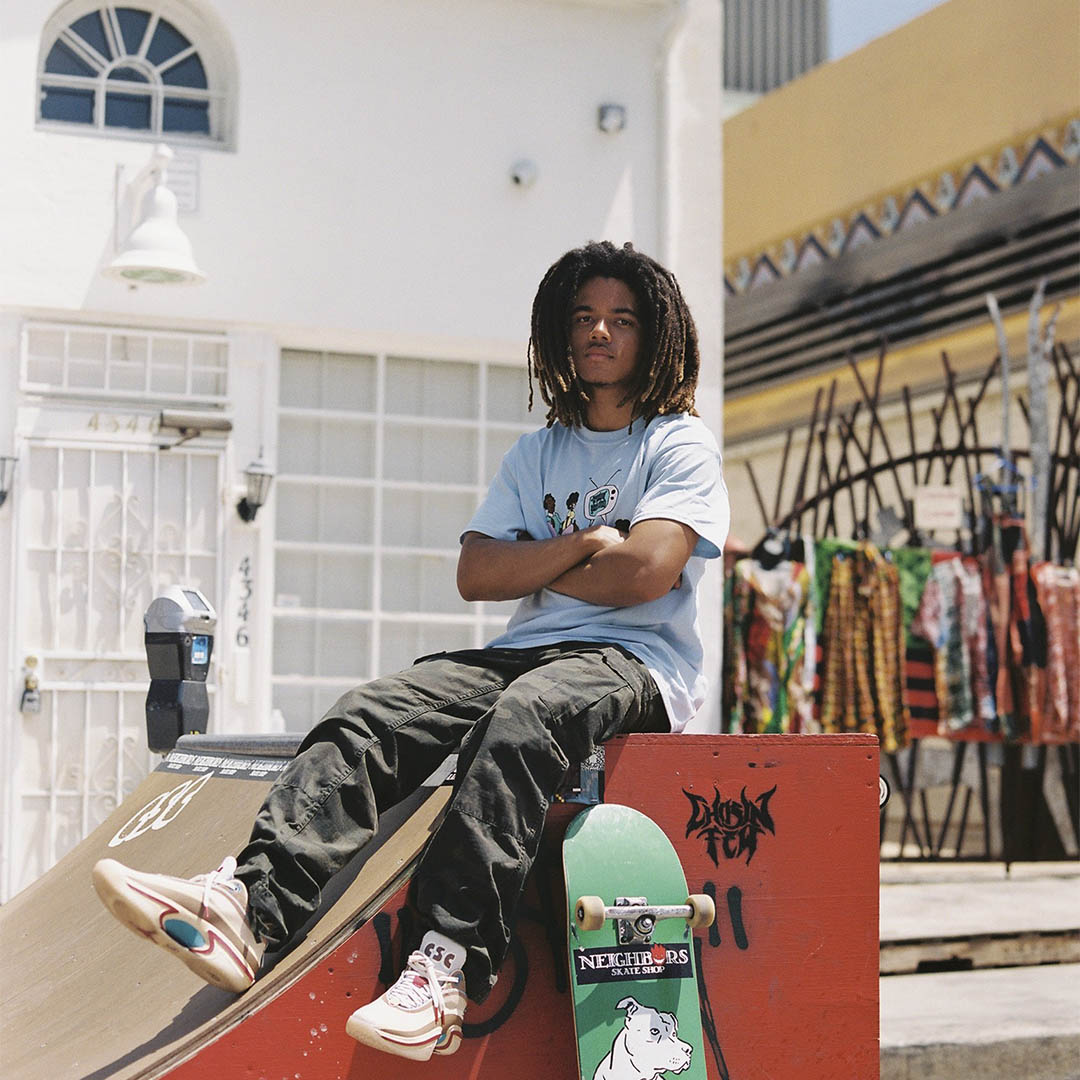
Nice Kicks: Hi Tobey, thanks for taking the time to talk! How have midterms been? I heard you’re an Economics major, but also thinking about studying Science, Technology, & Society. Considering how creative you are, I didn’t expect you to be involved in STEM.
Tobey McIntosh: “Yeah, people don’t often think of it like this, but I think they go hand-in-hand. In the STEM process I feel like there’s a lot of trial and error. For example, in engineering you’re creating a lot of prototypes. If it doesn’t work out you have to figure out what you need to do to make it work. I feel like that transfers over to creativity and also running the [Crenshaw Skate Club].”
What do you hope to accomplish in STEM?
“I think somehow integrating technology with a store network. So maybe like creating a new interface for the store and a unique experience. That could be really cool to play with. I know this guy named Iddris Sandu is very good at doing that. He’s someone who I look up to. I’ve been able to meet him a few times.”
Considering the success of Crenshaw Skate Club, do people question why you’re going to school still?
“Yeah, I get that reaction a lot. Ever since I was a kid it was my dream to go to Stanford. So when I got in here early, it was a no-brainer that I was going to go. Also, in real life, you got to learn how to manage your time and balance things. I feel like it’s better to do that now with balancing college and balancing [Crenshaw Skate Club] because life isn’t going to get any easier. As life goes on, I’m just going to have to balance more things, so I might as well practice that now.”
How do you balance school while also running Crenshaw Skate Club?
“I make sure to schedule all my Zooms or meetings that I have in between my class periods. Thankfully now I’ve been able to have more of a team to delegate work to. I just need to be present in meetings and things like that. But for design, instead of me sitting there for hours on Illustrator and Photoshop, I draw sketches of designs and give them over to a graphic designer who can help me make that, so that has saved me a lot of time. Now I’m doing more things as far as running the brand. I’m able to do my school work and then after I do my school work I’m like, ‘Okay, what do I need to do for Crenshaw Skate Club now?’”
What made you want to go to Stanford?
“I came [to Stanford] when I was a little kid and everyone just seemed so happy to be here. That’s something I didn’t really notice at other colleges. I grew up in LA and I would go to USC football games. When I would walk around USC people didn’t look happy, and at Stanford, everyone was happy. It looked like a great place to be and then I found out that it’s actually a really good school as well.”
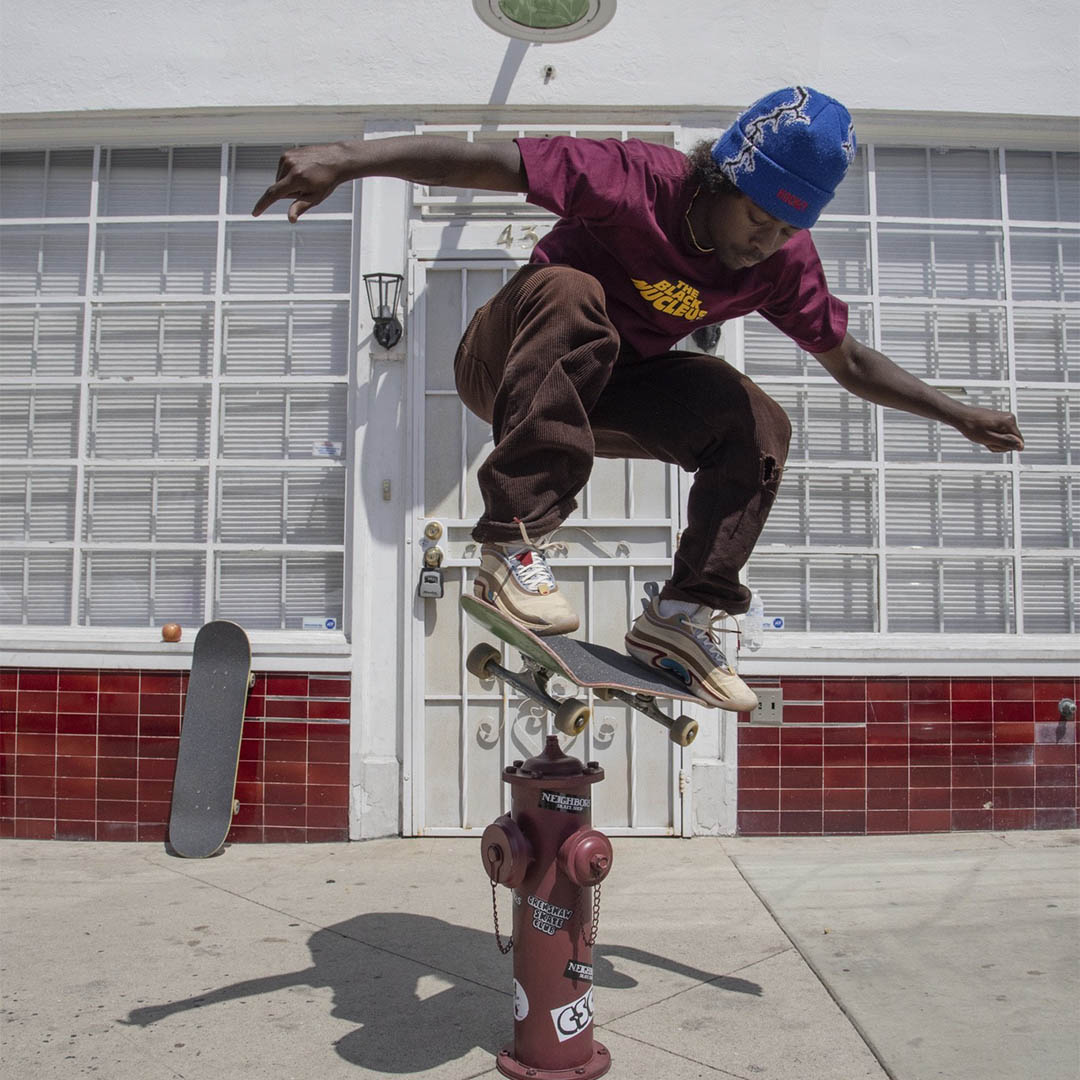
How would you describe the skate community in the Crenshaw district?
“It’s a very uplifting community. It’s not a community where someone gets a sponsorship and people are hating on it or anything; everyone’s very congratulatory and uplifting. It’s a tight knit community. Everyone is close. I feel like it’s non-competitive and everyone just has fun.”
How did Crenshaw Skate Club get started?
“So I grew up in South Central, Los Angeles. Me and my friends skated in the Crenshaw district. All my friends that skate, we’re all African American, but when I would look at skate videos and skate magazines, I never saw people who looked like me and my friends. That really confused me because all the people who I was seeing skate are African American. But then when I would look at mainstream skating, black people weren’t being represented. So I wanted to create something to represent us in the skate industry, and that was Crenshaw Skate Club. That was the main message behind it. It wasn’t a brand at first, I was just making shirts for me and my friends to wear. Then I started selling it at a local skate shop in my neighborhood called Lottie’s. I would just sell it there and it was still pretty local. I only sold five shirts there. It wasn’t anything big, but we would just go around skating in our shirts. I would go to Supreme a lot and one day I was in there wearing my shirt. I told them I started this Crenshaw Skate Club thing, and my friend that worked there was like, ‘Here’s the email for the wholesale buyer. Send him an email to see if he likes it. If he likes it, we could carry it.’ I had an Instagram but I wasn’t selling anything on Instagram or online yet, so I was like, ‘Okay, I’ll see if they like it.’ So I sent them an email and I sent them the story behind Crenshaw Skate Club. They liked it and they placed an order for more shirts than I had ever seen before. They sold out at Supreme and then they placed an even bigger order. So then I was just growing with Supreme. It was the only place you could buy a Crenshaw Skate Club t-shirt for a while.”
That’s insane. To have Supreme as Crenshaw Skate Club’s first official retailer is crazy.
“Yeah, it’s a good place to be in for your first main distribution. Then I started a website and did a drop. I was thinking that since it did well in Supreme, that it was going to do well when I sell it. So I figured out how to make a website. It took such a long time and it was a pretty bad website, but I did that and got ready to drop. I was so excited and then I sold zero shirts. I saw nothing.”
How was that experience? Knowing that you were selling out at Supreme, but not able to sell a single shirt on the Crenshaw Skate Club website.
“It was a bad feeling and I think that’s why a lot of people give up when they make a brand. Making cool stuff isn’t the hard part – the hard part is not giving up. So instead of looking at it like, ‘Oh, no one wants to buy my stuff.’ I would just look at it like, ‘Okay, what can I do next time to make the drop more exciting and make people want to buy it?’ At this point I was just selling like a hand-drawn logo in white and black. I was like, ‘Okay, I’m going to incorporate more color to make stuff pop.’ I did that and then I sold a few more shirts. So I just keep on evaluating myself and being self-critical of what I put out, and just continued to try to get more people to organically grow the brand. That’s how it started becoming a brand per se, because it was very core to the skate industry for a while. Then in 2019, Justin Bieber started wearing it a lot.”
How did Justin Bieber find out about Crenshaw Skate Club? What was your reaction when you saw him wearing CSC?
“I did a pop-up at Round Two and this guy bought a bunch of stuff. He told me he was Justin Bieber’s stylist. At that point I didn’t think much of it. I was like who knows if he was going to wear it or anything. Then one day I’m sitting in English class and one of my friends runs into the room. He’s like, ‘Tobey, you got to look at this!’ I’m in the middle of class and everyone is looking at me weird, and my teacher is like, ‘What’s going on?’ Then he shows me the phone and it was Justin Bieber wearing one of my shirts. It was crazy. I was excited, but I was like okay – I got to play it smart now. Do I want to be known as the brand that Justin Bieber wore? Or do I just want to stay true to my identity? So I didn’t post about it, but he kept continually wearing it. I had a lot of new eyes on my brand, but I just kept continuing to put out what I wanted to. I feel like that was a smart decision in the long run because it never boxed me in as the brand that Justin Bieber wears, because I know that’s a limited time. If I market myself as that, once he stops wearing it, then everyone will move onto the next thing. I just never catered towards it. I feel like that helped grow the brand and put it on a larger platform, with me doing the same thing. It’s been dope. I’ve been able to do collaborations with brands that I’ve always bought as a kid like Born x Raised, Carrots, and The Hundreds.”
What was it like collaborating with The Los Angeles Clippers?
“That one was crazy to do, especially being a lifelong Clippers fan. That was amazing. I went to the game and spoke about the collaboration. It was a little nerve wracking to speak in front of 20,000 people, but now when I do a presentation at school, it makes it so easy. It’s a piece of cake now.”
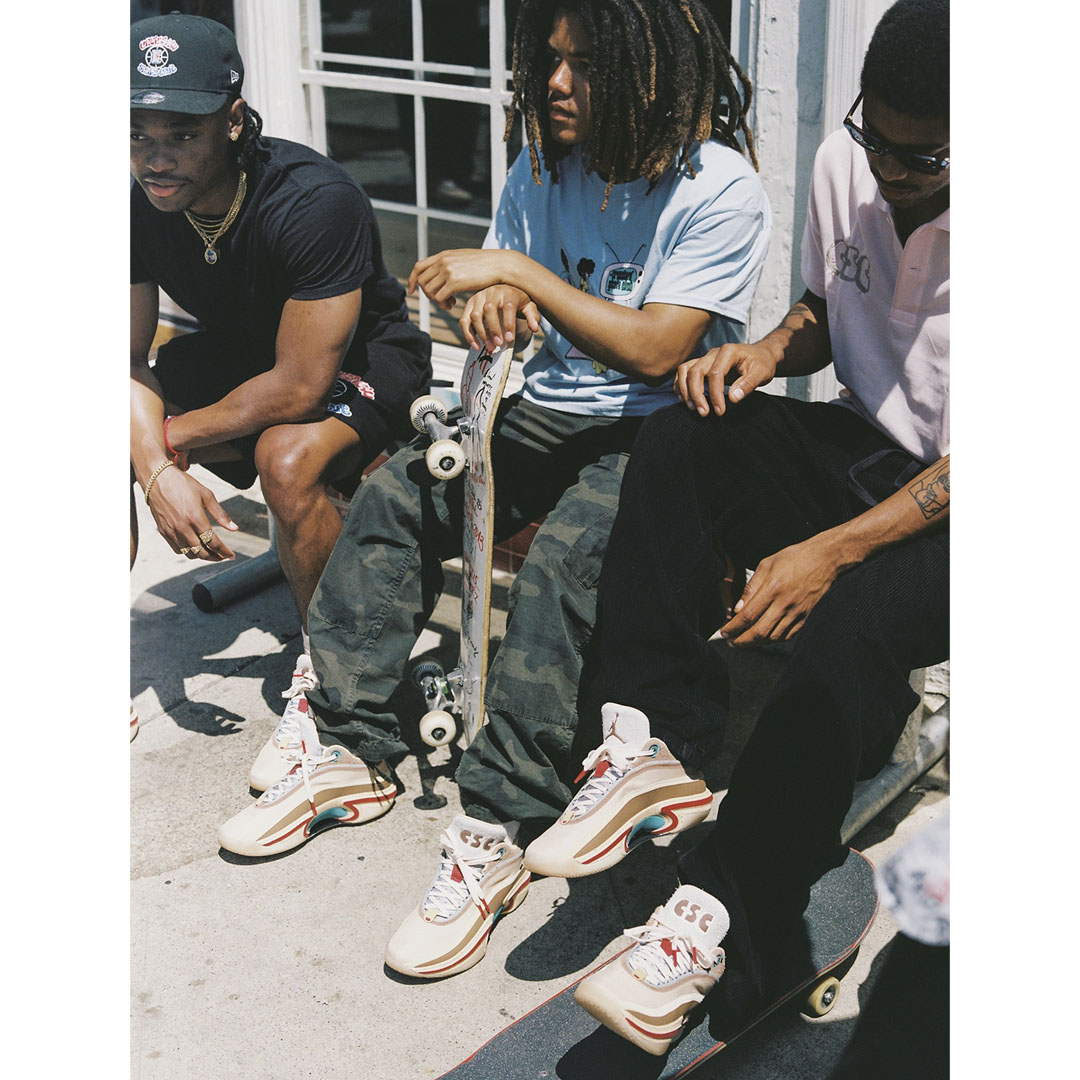
Being that you were only 14-years-old when you first started Crenshaw Skate Club, how did you get the ball rolling? Did your parents support you?
“To get the first shirts I spent like $100. That was just what I had saved up. I was always someone who was good at having businesses. Even before I had Crenshaw Skate Club, I had a yard sale business. I would go to different yard sales and then have my own yard sale and mark up [my finds]. I was always good at saving money, so I had $100 to make shirts. That’s how I funded the first round of shirts. At first it was easy because [Crenshaw Skate Club] was so small, but I never went big and got investors or big injections of cash into my business. I just organically grew it and stayed steady, and stayed at the pace I wanted to grow it at. So I never had a problem with money.”
What was the turning point that catapulted Crenshaw Skate Club to be able to collab with Jordan Brand?
“The first major thing I did was a collaboration with Carrots, and we sold it at ComplexCon. That kind of solidified [Crenshaw Skate Club] in the industry because before that, I never really did any industry collabs, I would just collaborate with friends. That was the first mainstream streetwear thing I did. I feel like that got a lot of people to see my brand.”
Jordan Brand also gave you the opportunity to orchestrate a design program at the Crenshaw YMCA. Thinking about that is interesting because you’re a student, but also a teacher. What’s it like to be so young, but also be at this elevated space where you’re able to teach others?
“I feel like it’s really important for me to do that. Someone told me the other day that a lot of things I’m doing, I’m the first person in this space to do that from [Crenshaw]. So I think it’s important that once I knock down that door, not to close it off so no one else can do this. I don’t want to be the only one to do something. I want to let everybody else in and teach everyone else, so they can do it similar to me, or be better than me, or not even in my field. In the design program it was important to teach kids that even if you don’t want to be a designer, there’s more you can do in life to be successful [rather] than become a professional athlete, rapper, or anything else. Especially where I come from, it’s important to show kids options of what you can do in life to be successful. You can be an engineer, you can be an artist, you can start a business. I think that’s very important to teach kids because I feel like I never had that growing up – someone my age to tell me that type of stuff and lead by example. So just being that for kids in my community and kids all over the world is very important to me. It’s something I hold very highly. The design program was really cool. I got to see the growth of the kids. My program was a month. At the beginning of the program, some of the kids were like, ‘Oh, I’m not a designer. I’m going to be an NBA player. I’m not going to do anything else. I don’t have to worry about this stuff.’ And then at the end of the program, I saw them switch saying, ‘Design is cool.’ They realized they could do other things. Of course you can totally be a basketball player and pursue that, but you can also do more if you want. You don’t have to box yourself in and just be a basketball player. You can be multifaceted. If you like design, be a basketball player who designs. If you like something — go do it, go pursue it, and you can achieve it at the highest level.”
What are some life lessons or influences from Crenshaw that you carry with you in your day-to-day life?
“I would say just seeing people in a community aspect. I love community and that’s something that I value very much because in Crenshaw people may not be the most well-off like in other fancier neighborhoods, but we have community. Everybody knows each other. If you need something, you can go to your neighbor and they’ll give it to you. That’s something that I hold highly and that’s what I looked for [at Stanford]. I grew up in the inner-city, but I would go outside of it to Melrose and Fairfax. I would see the disparities between the two neighborhoods and see the lack of resources in Crenshaw. So I think noticing that growing up helped put the battery in my back to close the gap. Obviously, me as one person, I can’t close that whole gap, but if I can close it a little bit then that’s good with me. And if I can influence more people to help then we can close the gap [together]. That’s why doing things such as building the computer lab at the Crenshaw YMCA was important to me. Some kids don’t have access to computers. Growing up I had friends who didn’t have computers at home and had to type essays on Google Docs on their phone, that’s really all they had. They didn’t have a computer. They didn’t have an iPad. That’s the reality. I feel like people take that for granted like it’s so easy, but when you’re typing 1,200 words on your phone, it makes it just that much harder. People always ask me, ‘Why don’t you do an NFT thing?’ But I wouldn’t do an NFT until every kid from my neighborhood has access to a computer.”
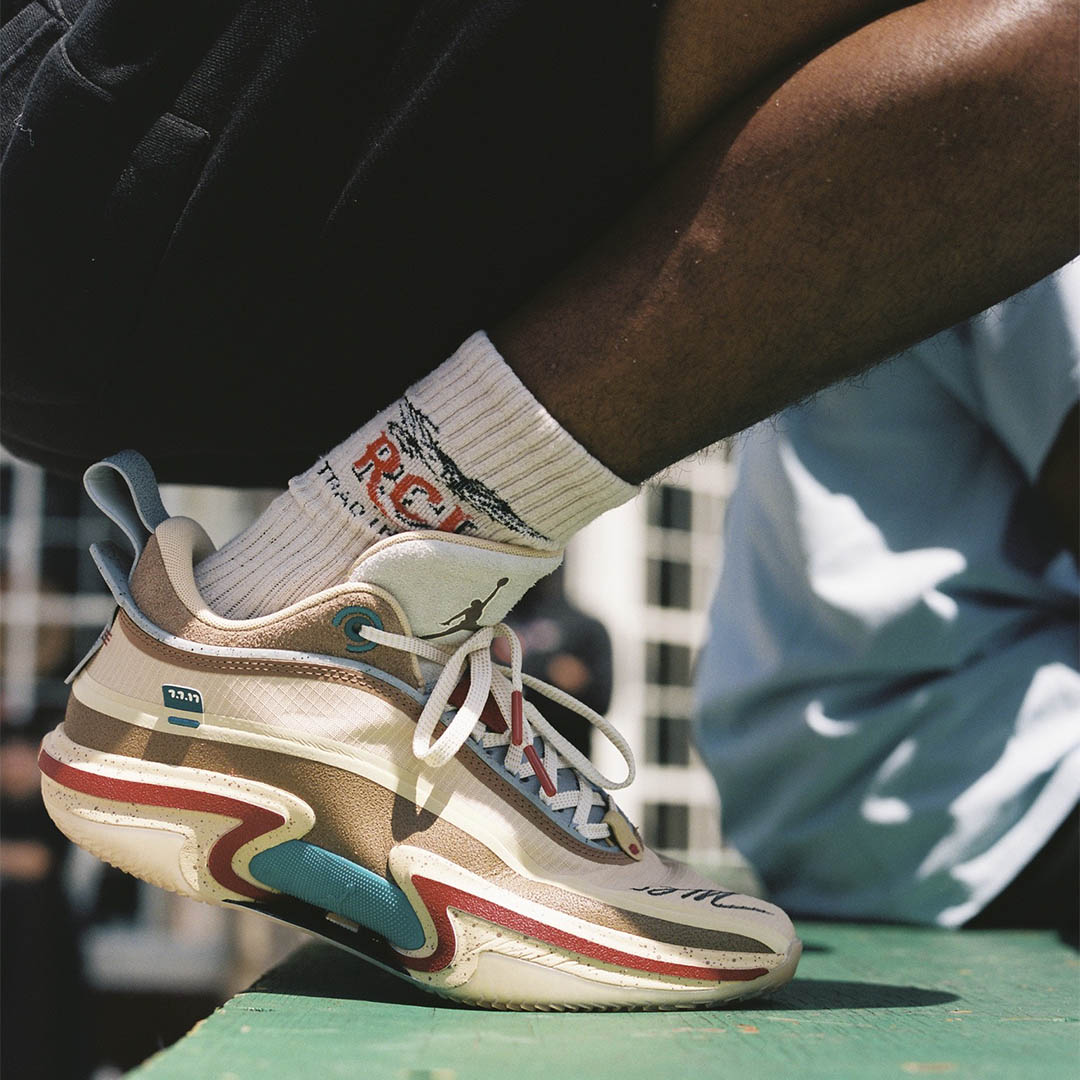
What’s your relationship like with sneakers? Would you consider yourself a sneakerhead?
“Growing up I never really could afford sneakers, but I would always watch sneakers on YouTube. I would watch BULL1TRC, Jacques Slade, and Qiasomar. I would watch Nice Kicks [Sole Access], when they would go to NBA teams and college basketball teams, and would check out the sneakers in the locker room. I watched that a lot. Then I remember when I had my first iPhone, I had the Nice Kicks app, and you guys had this series [Celebrity Sneaker Stalker], and I used to look at that on my phone. Then you guys had your first store in Texas and there was this guy that would do shoe reviews when you guys got new shoes in the shop. I would watch those a lot. I was just super into sneaker YouTube in general because I couldn’t buy them. My way of being a part of sneaker culture since I liked them, was just to watch YouTube videos. Watching a sneaker video made me feel like I had the shoe myself.”
How did your relationship with Jordan Brand begin?
“It got started through someone named Sobe. I met Sobe at the HUF store in 2018. I told him about Crenshaw Skate Club and he loved the idea. Then one day he invited me to come to the Nike offices in LA. That started my relationship with Jordan Brand because Sobe worked for Jordan Brand. After that I pitched him an idea about doing a shoe drive at the Crenshaw YMCA in 2019. There’s a Junior Clippers program at the Crenshaw YMCA and I was like, ‘Would you be willing to do a shoe drive there and give every kid in the program — from little kids to teenagers – a new pair of shoes?’ They were down to do it so we did a shoe drive there. That was the first thing I did with Jordan Brand.”
How did Jordan present you the opportunity to design your own shoe? What was that like?
“The conversation was like, ‘We’re doing this PE program with the Jordan 36.’ They didn’t show me and I had no idea what the Jordan 36 looked like. Then I thought okay, it’s probably going to be a performance shoe. That might be a little difficult to do, but why not take the challenge and put a different spin on it. I’m not a basketball player and our brand isn’t basketball, but why not take this traditional basketball shoe and put it in my lens, and make it revolve around skating. That’s something completely left field too. I feel like the last thing someone would expect a Jordan 36 performance shoe to do is go skate. So I thought it could be cool. I wanted to see the shoe before I agreed to it, so they sent me the file. They said I could start coloring it to see if I wanted to design the shoe, so I started doing that.”
What was the design process like when designing your Jordan? Did you know where you wanted to start or did you feel overwhelmed?
“It was a little overwhelming because I’m used to just making a graphic on a shirt and putting it somewhere. That’s pretty straightforward. But these shoes had all these different panels, and thankfully one of my very close friends, Mamadou, had a shoe. One of my other close friends, Garrett, who runs the brand C’est Bon with Mamadou – they both helped me put my ideas into the shoe and think about it more. Sobe was also very helpful. Those three people were very instrumental in helping me design the shoe. At first I just started coloring stuff and it was pointless. There’s no meaning to it. It’s hard to do that. So I decided to not look at it and think about stuff that’s meaningful to me, and see how I could implement that in the shoe. I needed something to base the color off of, so I based it off one of my characters in the design, that’s on the insole of the shoe. I wanted the elements of the shoe to be meaningful, so the brown part of the shoe is this rough texture, and it’s a reference from the apartment building I grew up in; the green is the outside of the building. The back tab is cement print because black skaters are the cement of the skate industry. We hold it together. When you see a building or a structure, you don’t really think about the cement aspect of it. People don’t really give it the credit it deserves, but it’s there. That’s what’s holding the building together. And that’s how I feel about Black skaters. We are at the core of the industry and we hold the industry together, but we don’t really get the credit that we deserve. With that in mind, implanting myself into the shoe helped a lot. The tab on the side of the shoe is ‘7.7.17.’ That’s the day I started Crenshaw Skate Club. Inside the shoe behind the tongue I have a quote, ‘We are the ones we’ve been waiting for.’ That’s one of my favorite quotes and it’s a Barack Obama quote. Being able to put that in there meant a lot. I just really put myself into the shoe and it came out pretty cool. I was nervous. It was my first time. It turned out that people liked it, which was cool. I’m glad. I also liked how the imagery came out as well. I got the standard shots of the shoe, but I really wanted the rollout to be skate based. People are like, ‘It’s crazy to see a PE being skated.’ It’s so coveted and we’re just like skating in it; messing it up. I felt like we were knocking that stigma down. Skating in it, wearing the shoes, and also doing it for another use. It’s meant to be a basketball shoe – and we’re skating in it.”
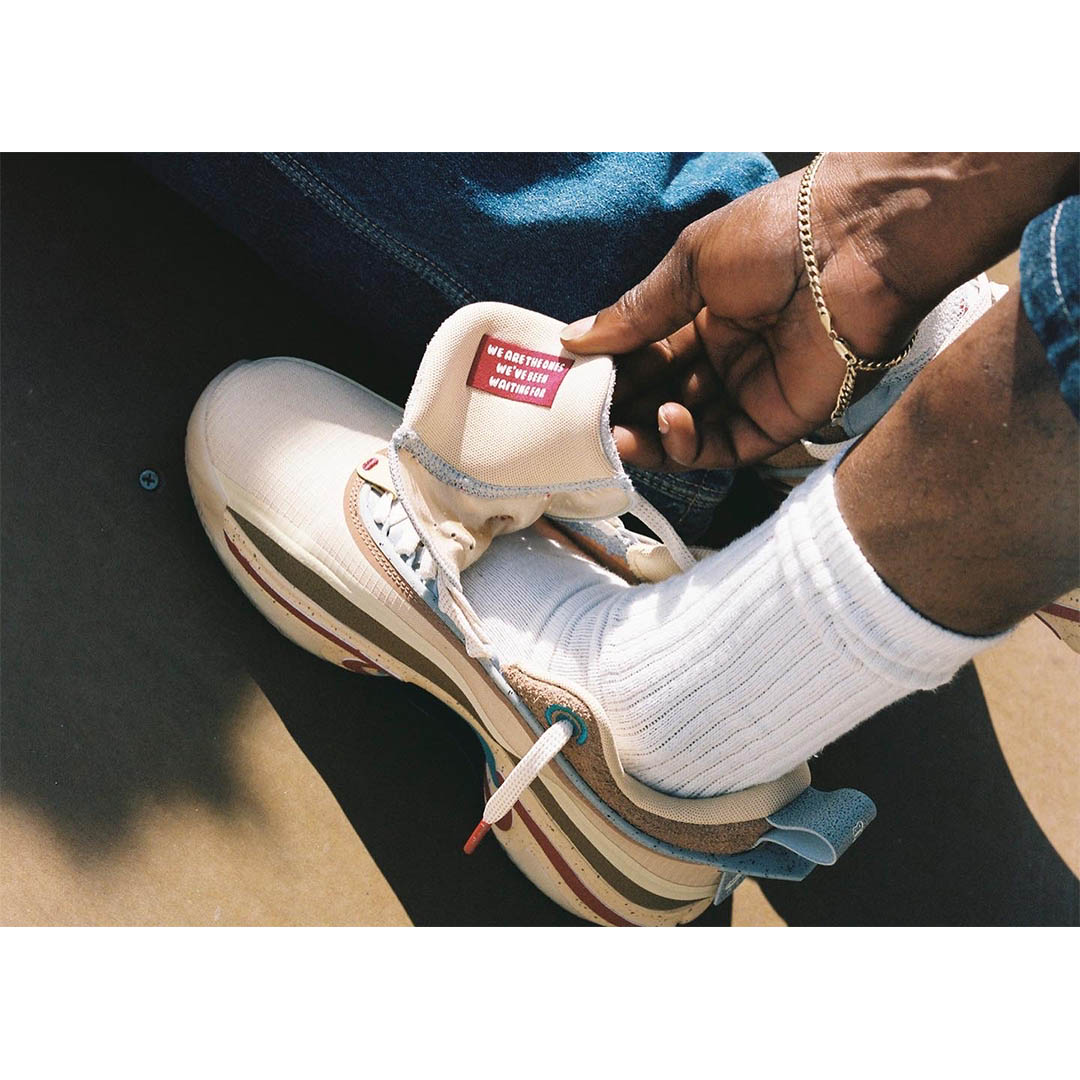
How long did it take for the sneaker to come to life?
“I would say I started designing it about a year ago. I got the sample a couple of months ago and everything looked good so we went forward with it. Obviously with COVID and everything there were a lot of delays. So it took a while, but it was worth it.”
What does a Jordan Brand collab mean for the world of skateboarding? How is this going to impact it or influence the culture?
“I think it knocks down the stigma. This Air Jordan 36 can be skated as well. You don’t have to just be a skateboard brand. You don’t have to put yourself in a box. You can do anything. Skateboarding is worldwide and you can skate in anything – maybe not dress shoes [Laughs]. It may not mean much in the world of skateboarding, but Michael Jordan is a symbol of excellence and black excellence. You can use [Jordan] as an adjective for something that’s the best. I think it means way more than just basketball.”
Are you and Jordan Brand working on any other projects at the moment?
“Not at the moment, but we’ll see after seeing how this PE does. I think the public reaction was pretty good, so it would be cool to do something else.”
What was the seeding process like? How many pairs were you able to give to friends and family?
“I got 50 pairs to seed out to people and then Jordan brand had maybe like 50-100 pairs that they got to give out. The people that I picked, we had an event at Neighbors skate shop to give out the shoes to people, and celebrate this moment with them. That really meant a lot to me, to celebrate this large moment with all the people I love. Seeing Jordan Brand’s list, some of the names were crazy like Bam Adebayo, Jayson Tatum, and other Jordan Brand athletes.”
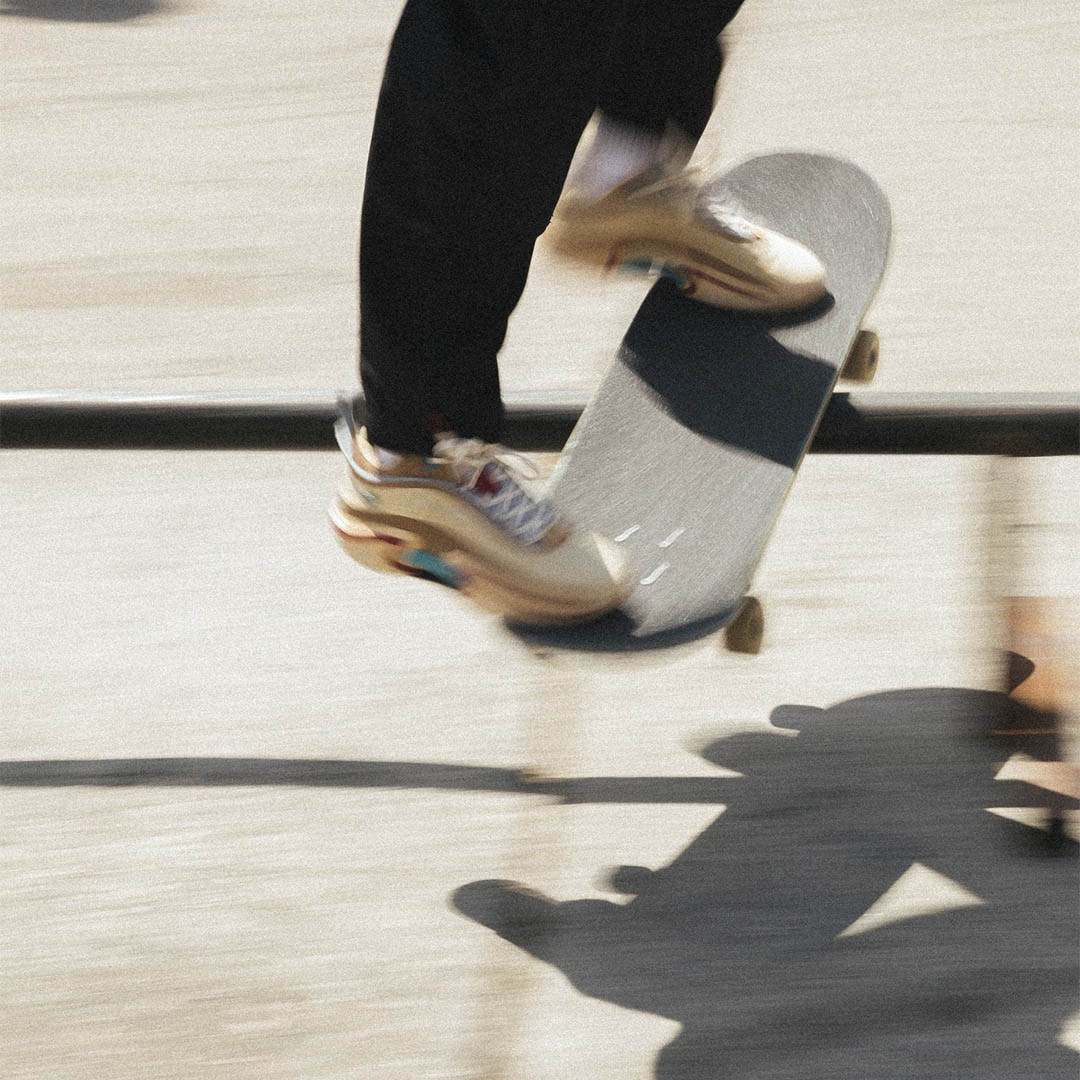
Are there any other dream projects that you imagine for Crenshaw Skate Club?
“As far as collaborations, I think collaborating with Nigo in some aspect.”
You already met Nigo so I think that could happen. How did you guys get introduced?
“Backstage at ComplexCon. I was there with Anwar from Carrots and Verdy. They introduced me to Nigo when I was 17. I remember one of the main things he said, ‘Wow, 17. It’s so cool you’re doing this at 17.’ He said it through a translator, but I thought it was so cool that Nigo thinks I’m doing something cool.”
That’s crazy. You were literally in high school kicking it with Nigo on the weekend. Outside of Crenshaw Skate Club, what do you hope to accomplish? What are your ultimate dreams and goals for yourself?
“Apart from Crenshaw Skate Club, one of my main goals is to start an after school program for [Los Angeles Unified School District]. It would be an after school skate program for kids, so they can do something positive with their time after school. I think that’s very important. I want to do things that will stabilize my community forever. Also, I would say graduate college. I think even pursuing higher education after college is one of my goals, like getting a Master’s degree. Having a Tobey McIntosh skate park in my neighborhood would be insane. That would be my ultimate dream.”
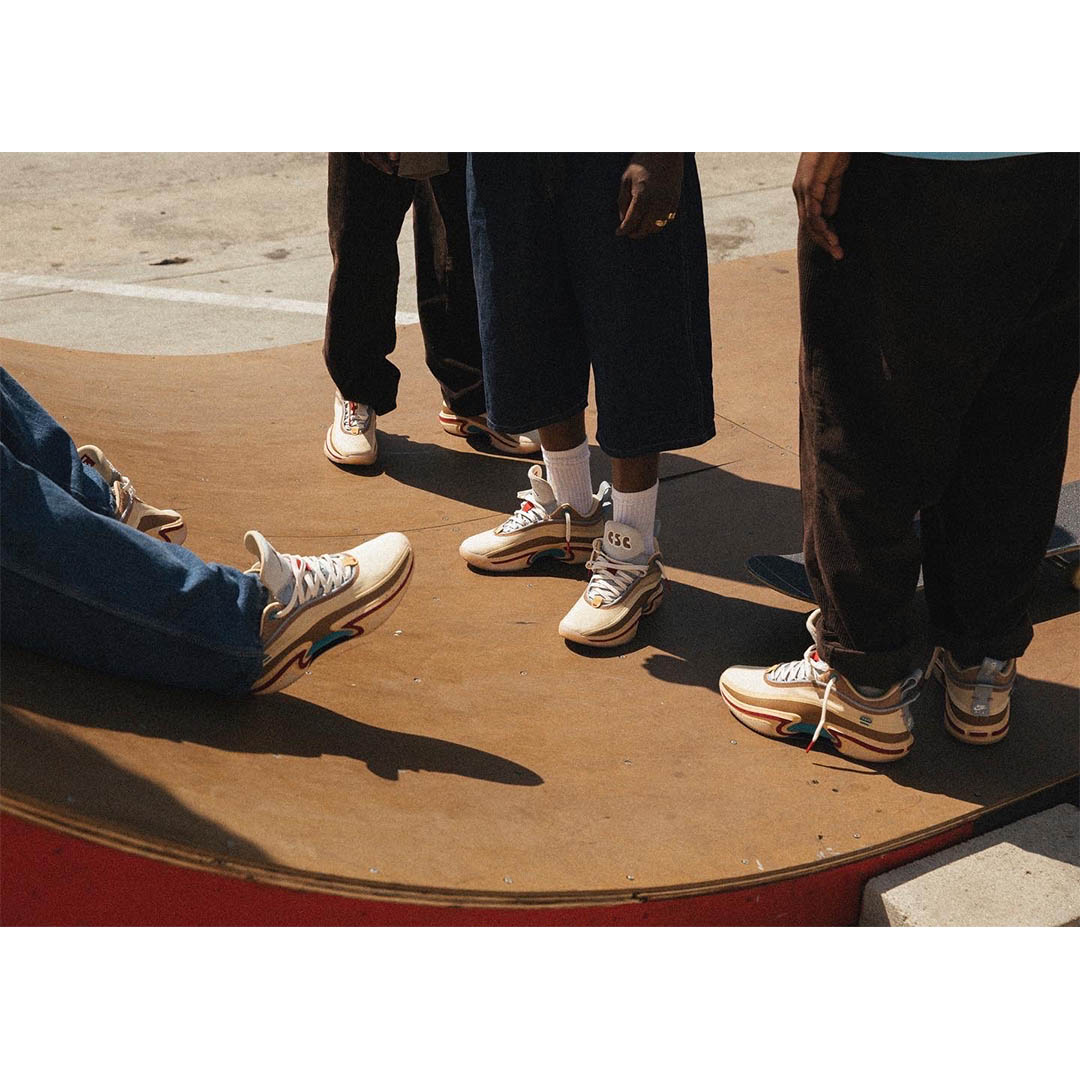
—
Keep up with Tobey McIntosh and Crenshaw Skate Club by following them on Instagram.
